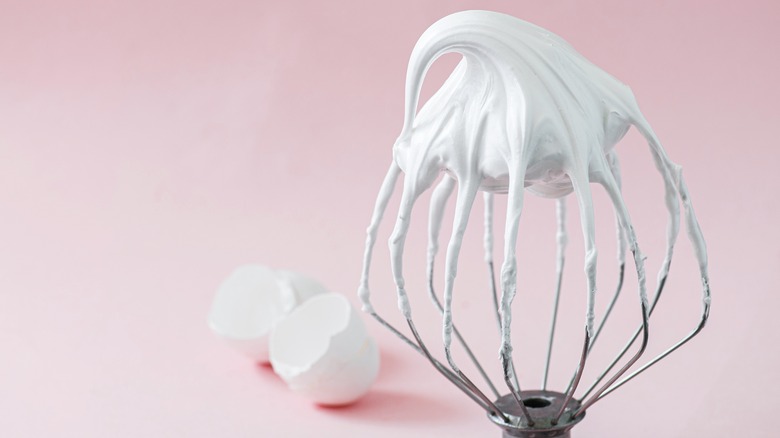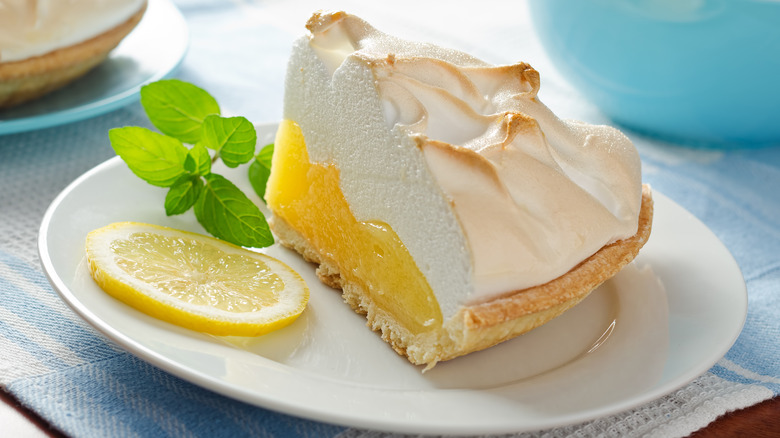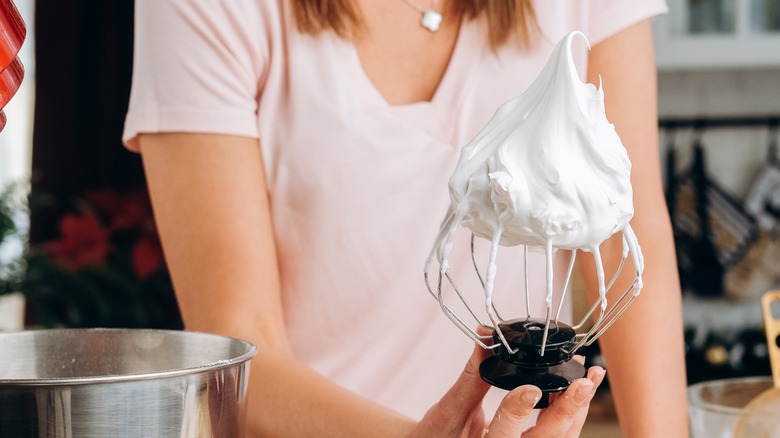Swiss Meringue Vs. French Meringue Vs. Italian Meringue: What Is The Difference?
You're almost certainly familiar with sugar, the crystalline powder that makes everything taste good. But sugar's uses go far beyond simply making soda and candy sweet. Under the right conditions, it can do some pretty cool stuff. For example, when exposed to heat, sugar undergoes a process called caramelization, wherein it oxidizes and transforms into a thick brown syrup (per Science of Cooking).
When you think of eggs, your mind might conjure up images of a sizzling scramble. However, eggs can't be confined to the breakfast table. In certain circumstances, the proteins found in eggs denature, which can result in a wide variety of structures, per Eggs.ca.
When you bring eggs and sugar together, you can do some truly incredible things. C&H Sugar explains that when you whip together egg whites and sugar, you get meringue. Though this delectable dessert topping has a simple list of ingredients, its preparation can be anything but, depending on which of the three meringue styles you choose to whip up.
What exactly is meringue?
According to Cuisine at Home, when you whip up egg whites, the air you introduce transforms them into a foam. This foam can be up to eight times as voluminous as the unwhipped egg whites. By adding sugar, you stabilize the foam, and make it sweet. There are a number of uses for meringue — it serves as the towering topper of this mile-high lemon meringue pie recipe.
Martha Stewart explains that French meringue recipes are the easiest to prepare. Unlike the other two varieties, there isn't any heat involved in making it. (You will, however, have to bake French meringue before consumption to ensure its safety.) To make French meringue, slowly introduce sugar into your egg whites as you're whipping them. You'll know the sugar and eggs have been fully incorporated when your meringue forms stiff peaks, per Cuisine at Home.
French meringue is the least stable of the three varieties, but it's also the lightest.
Swiss and Italian meringue
Though they use essentially the same ingredients, both Swiss and Italian meringue are more difficult to make than their French counterpart. According to Martha Stewart, to make a Swiss meringue recipe, you need to first mix your egg whites and sugar together over a heat source. If you don't whisk your mixture constantly, the egg whites will cook. After the sugar has fully dissolved, remove your meringue from the heat and whisk until firm. Martha Stewart quotes food stylist Caitlin Haugh Brown, who insists that Swiss meringue is the perfect meringue middle ground, as it's, "... more stable than French, less fussy than Italian."
Italian meringue, meanwhile, is the most stable type of meringue, per Cuisine at Home. To make it, you must first make a sugar syrup, which is a heated mixture of dissolved sugar in water. When your sugar syrup has reached the soft-ball stage, which falls between 238 F and 240 F, you can slowly introduce it into your egg whites as they're being whipped.
Martha Stewart adds that neither Italian meringue or Swiss meringue need to be baked after you whip them up. The heat that you introduced while making them sufficiently cooks the egg whites.


